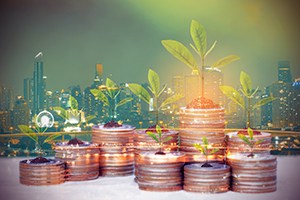
MANILA, Philippines — Green bond issuances in Southeast Asia should pave the way for more energy-efficient buildings amid growing population and energy demand in the region.
Tokyo-based Asian Development Bank Institute (ADBI), the multilateral lender’s think tank, said the building and construction sector is a major energy consumer with massive potential for energy savings.
However, less than nine percent of financing in building construction and renovation has been spent on energy efficiency projects.
Over the next few years, it is estimated that green bond issuances in the Philippines and in the region will grow as countries will integrate this into their recovery in a post-pandemic world.
“Tremendous scope exists to scale up investments in energy efficiency to maximize the energy-saving potential and address the lack of project financing in this sector,” ADBI said.
It added that green buildings yield a higher return on investment than traditional ones.
The think tank emphasized that ASEAN countries are seeing a surge in energy demand due to their growing populations, expanding economies, and rising living standards.
In the region, green bonds enjoy high levels of institutional support but these issuances are still low compared to the global market.
“Since Southeast Asia is in the equatorial belt, investments in building design and energy efficiency improvements have a larger impact on energy efficiency savings and allow for shorter payback periods. This demonstrates opportunities for financing green buildings using green bonds in ASEAN,” ADBI said.
However, ADBI also stressed certain barriers to financing green buildings using the green bond market including the lack of standard for assessing the “greenness” of a building and the perception of high transaction costs that may discourage firms from issuing bonds.
To address these, ADBI said demonstrations of green bond issuance can be incentivized by temporary subsidies for the transaction costs incurred by firms for labeling bonds as “green.”
“They should also promote green building codes and standards in order to provide project sponsors with a benchmarking mechanism and increase the visibility of green buildings as a potential investment,” it said.
Article and Photo originally posted by Philippine Star last August 5, 2021 12:00am and written by Louise Maureen Simeon.







More Stories
Vista Land Celebrates 50 Years with Sandiwa: An Event Honoring Leadership, Legacy, and the Filipino Dream of Homeownership
Vista Land Celebrates Love Month in Ilocos Region
Vista Land Bridges Cebuano Heritage and Progress with Valencia by Vista Estates